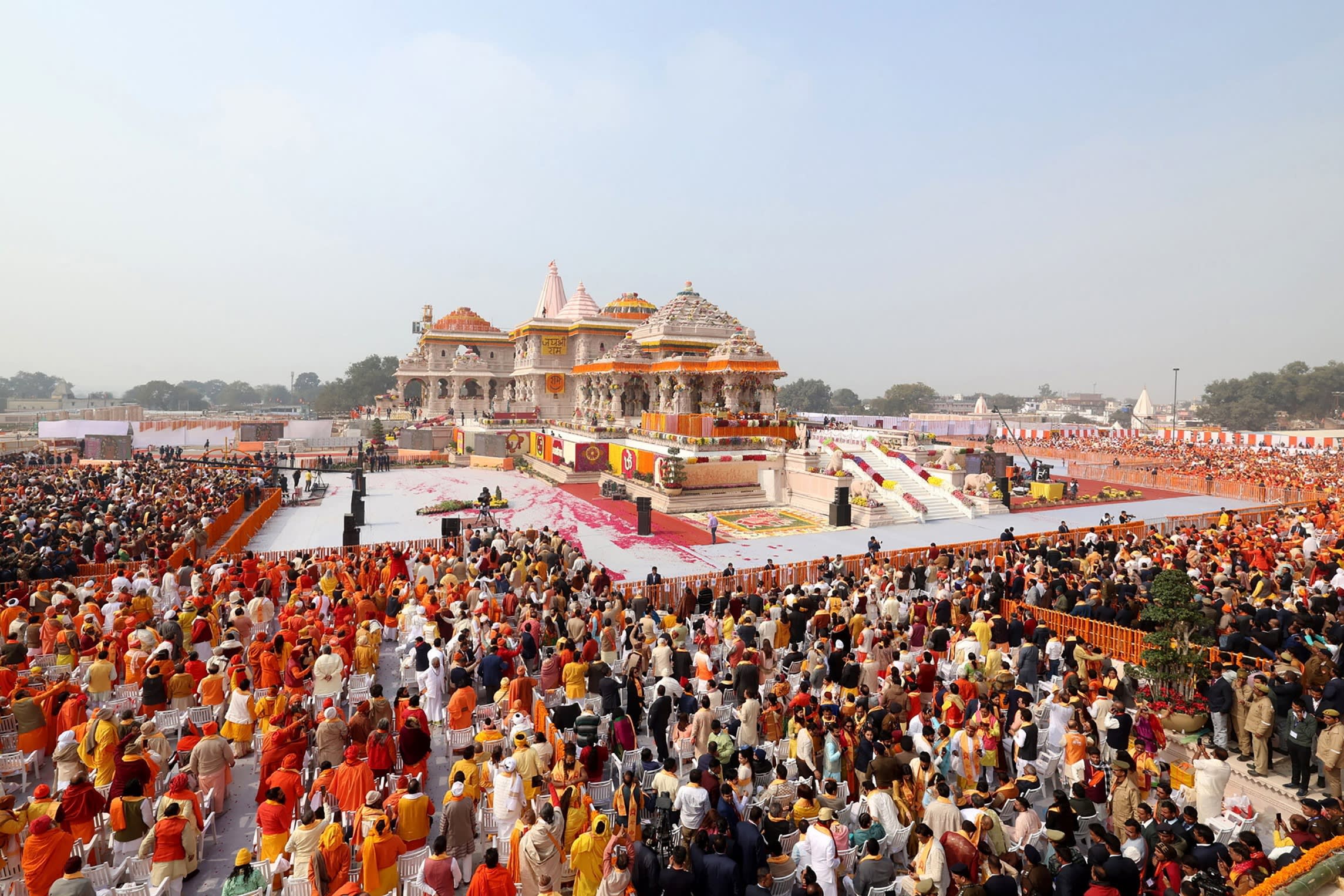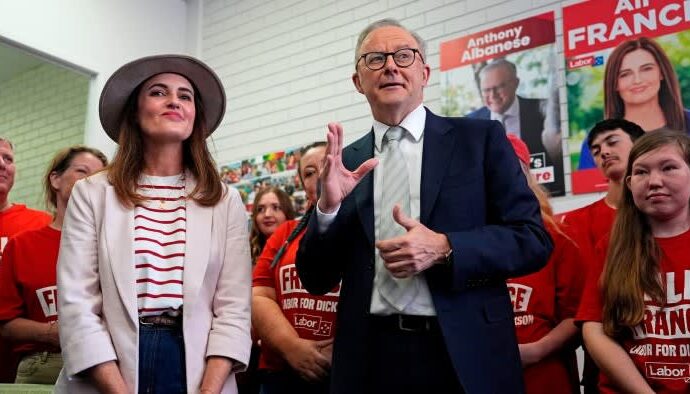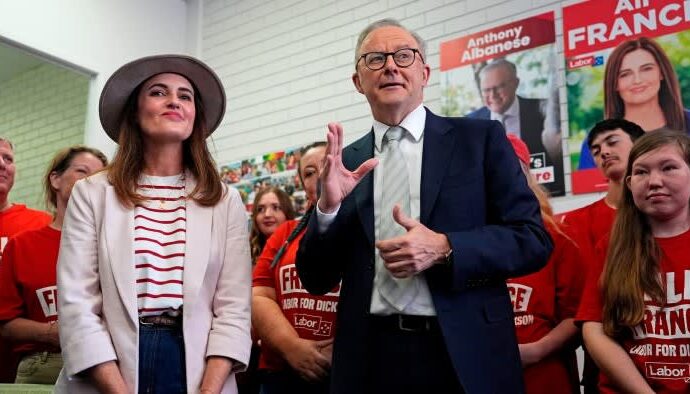Unlock the Editor’s Digest for free
Roula Khalaf, Editor of the FT, selects her favourite stories in this weekly newsletter.
Narendra Modi on Monday presided over the consecration of a Hindu temple on the site of a destroyed mosque, delighting millions of his supporters but drawing criticism from opponents who said India’s leader was flouting the country’s secular constitutional principles.
Business leaders, celebrities and film stars joined the ceremony rich in pomp and symbolism that marked the opening of the first phase of the Ram Mandir shrine in Ayodhya, Uttar Pradesh, a northern state ruled by Modi’s Bharatiya Janata party.
The BJP and the religious movement behind it, the Rashtriya Swayamsevak Sangh, had for decades championed raising a temple at the contested holy site in devotion to the god Ram, who Hindu devotees believe was born there. In 2019, a Supreme Court ruling allowed the construction of the temple, where a 16th-century mosque had previously stood, to go ahead.
Modi arrived at the ceremony on Monday clad in all white, carrying offerings for a child idol of Ram. He was greeted by the sound of conch shells, and helicopters showered the temple with flower petals.
Mukesh Ambani, the billionaire chair of Reliance Industries, and his brother Anil Ambani were among the prominent Indians in attendance. RSS chief Mohan Bhagwat was seated alongside the prime minister, along with Uttar Pradesh chief minister Yogi Adityanath, a Hindu cleric, and the state’s governor Anandiben Patel.
India’s 73-year-old prime minister hailed the opening as “the beginning of a new era”, adding that people would talk about the date “for thousands of years”.

Ayodhya has long been a flashpoint for religious strife between Hindus, who make up four-fifths of India’s population of 1.4bn, and minority Muslims. The destruction of the Babri mosque sparked communal riots in which more than 2,000 people were killed.
For Modi’s millions of supporters, the temple’s consecration marked the ascendance of the country’s majority religion after centuries of Muslim and British domination. Government offices were given a half-day holiday and groups of young men, many wearing saffron shawls, took to the streets in the capital New Delhi and other cities with chants of Jai Shri Ram, or “Hail Lord Ram”.
In the lead-up to the event, Modi had embarked on a nationwide tour of Hindu temples, during which he kept to an ascetic regimen, subsisting on coconut water and sleeping on a blanket on the floor for 11 days.
The BJP is expected to tap into religious nationalism in the campaign to propel Modi to a third five-year term in national elections in April and May.
Some likened Monday’s ceremony to an elevation for Modi, India’s most powerful leader in decades, to quasi-royal status. Govind Dev Giri, a Hindu religious leader, called Modi a rajarshi, or royal saint, in remarks at Monday’s ceremony
Nilanjan Mukhopadhyay, author of a biography of Modi and an expert on Hindu nationalist politics, said: “Essentially this is all about crowning one person today and that person is not the deity but the king.” He likened the celebrities gathered in Ayodhya to “courtiers”.
Politicians from the Indian National Congress, the country’s formerly dominant party that Modi’s BJP pushed from power in 2014, boycotted the event, as did representatives of other opposition parties.
Analysts said the opposition would struggle to challenge Modi in the upcoming election, when they are planning to attack the prime minister primarily on economic issues.
“There is a feeling of pride about the revival of Hindu civilisation,” said Asim Ali, a political analyst. “It’s very hard for any counterpoint idea from the opposition to take shape, and the BJP is winning on this issue.”
The temple’s reconstruction was financed by private donations. But the Indian and Uttar Pradesh governments stepped in to develop infrastructure for what is now expected to become a major pilgrimage site, building wider roads, a new international airport and an upgraded railway station.


